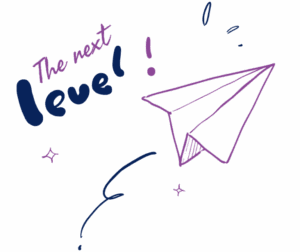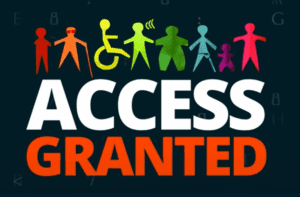When you’re blind or have low vision, the idea of making a good impression when applying for a job can feel complicated. You might wonder how to show confidence without eye contact, how to connect with others in a room full of small talk and visual cues, or whether networking is even worth the effort.
We get it. In a world that still expects firm handshakes and steady eye contact it can be hard to feel like you’re doing it right. But here’s the good news: the ability to network and build meaningful professional relationships has never relied solely on eyesight. Connection is about communication, consistency, and character.
Whether you’re navigating your first job search or trying to grow your career, here are some tips to help you network and build connections without relying on sight.
Networking Without Sight
Let’s be real, most networking environments weren’t designed with blind or low vision professionals in mind. But that doesn’t mean you can’t thrive in them. You’ve already navigated countless spaces that weren’t built with you in mind and you’ve found ways to thrive anyway. Networking is no different.
You don’t need to be able to read name tags, maintain eye contact, or study facial expressions to make strong connections.
If you’ve ever felt unsure about when to jump into a conversation, how to make your presence known, or whether someone’s truly engaged, you’re not alone. We’ve all struggled with this. These are common questions, but luckily, they have answers.
With the right strategies, you can confidently navigate any room (in-person or virtual) and build meaningful professional relationships without relying on visual cues.
How to Make a Strong First Impression Without Eye Contact
Your voice is one of your most powerful tools. You can use it to express warmth, professionalism, and curiosity. These are all things that build connection.
Here are a few simple strategies:
- Introduce yourself clearly and share your name and purpose for connecting (“Hi, I’m John. I’m exploring careers in marketing and interested in inclusive workplaces.”).
- Use people’s names in conversation. It helps them feel acknowledged and remembered. When someone introduces themselves, do your best to remember their name.
- Speak with intention. A calm, confident voice makes a big impact. While you may feel nervous, try not to have a rushed or robotic voice.
Focus on Listening, Not Just Talking
When you’re not relying on visual cues, listening becomes a superpower. By actively listening, you can pick up on tone, energy, and interest. These are the things sighted people often miss.
You don’t need to dominate a conversation to stand out. Instead:
- Ask thoughtful questions about someone’s work or background.
- Reflect on what they say (“It sounds like you really enjoy the leadership part of your role. What’s that been like for you?”).
- Show curiosity and be friendly. People remember how you made them feel more than what you said.
Practice Confident Body Language
Even if you don’t use eye contact, small cues still matter. Facing someone when you speak, using your hands naturally, and nodding while listening can show engagement.
You might also want to practice:
- Offering a handshake or verbal greeting when appropriate
- Speaking up at appropriate times in group settings
- Using assistive tools like a white cane with confidence—it’s a way to inform people you’re blind without needing to verbally tell them
One challenge some blind and low vision professionals face is being unaware of their own facial expressions. If you’re thinking deeply, listening closely, or simply orienting yourself in a new space, your face might unintentionally appear unapproachable to others. This is frustrating—and hard to correct on your own. If possible, try asking a close friend or colleague to gently give feedback when they notice a look that might seem off-putting. A little awareness and support can go a long way.
Here’s one thing that many blind people and folks with low vision often misunderstand: you don’t have to mirror sighted behavior. You just need to show up with clarity, professionalism, and self-confidence.
Be Honest About What You Need
Some people choose to disclose their disability when networking; others don’t. There’s no one-size-fits-all approach. But if you’re in a space where you do feel comfortable sharing, it can be helpful to briefly explain your approach to communication.
For example:
“I don’t use eye contact, so if I miss a visual cue, feel free to just say it out loud.”
This simple comment can reduce awkwardness, set expectations, and help others meet you halfway.
Follow Up and Stay Connected
Networking doesn’t end after a five-minute chat. Following up is how relationships are developed and maintained.
Send a short, personalized message after meeting someone. Mention something you talked about and express your interest in staying in touch. It doesn’t have to be perfect—it just needs to be genuine.
And if remembering names and details about each person is tough (especially without being able to visualize their different faces), keep a few notes. There’s nothing wrong with having a system. It’s a smart strategy, not a crutch.
There Are Many Ways to Be Memorable
At the end of the day, the people who network successfully aren’t always the loudest, the most charming, or the most polished. They’re the ones who show up authentically, follow through, and leave people with a positive impression. This goes for sighted and non-sighted people, alike.
You don’t need to see someone’s face to connect with them. You just need to show them who you are.
You Can Build a Strong Network Without Eye Contact
If you have been hesitant to network because you’re unsure how to navigate it without sight, we hope this reminds you that you are capable.
You have the communication skills and the lived experience. With a little bit of practice and strategizing, you can build connections that lead to incredible opportunities.
You belong in every room. You bring value to every conversation. And your presence—whether or not it includes eye contact—is more than enough.
If you’re ready to build your skills, grow your confidence, or take the next step toward employment, the Ablr Adult Workforce Program offers training, support, and hands-on experience to help you succeed in the workforce.






